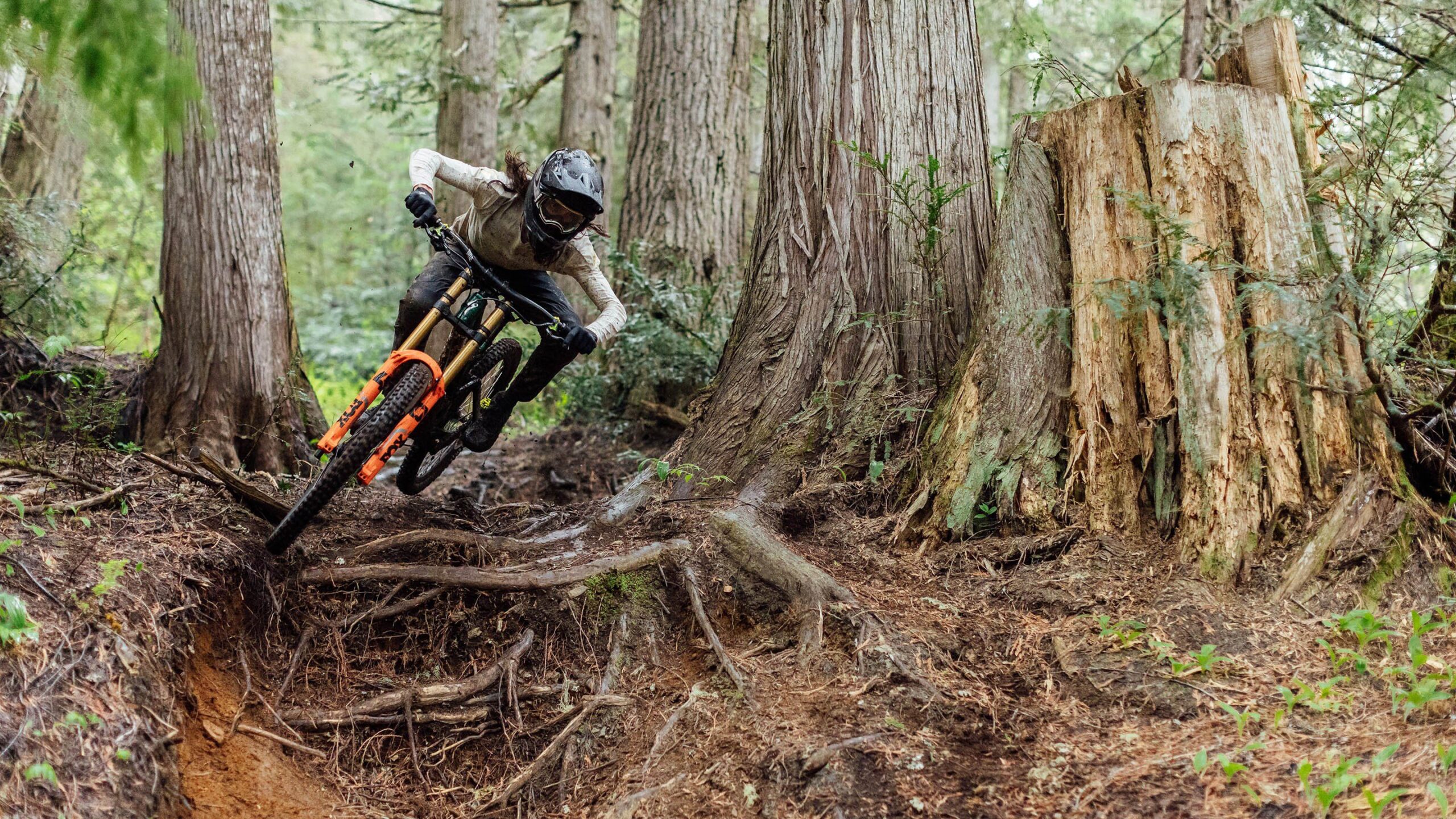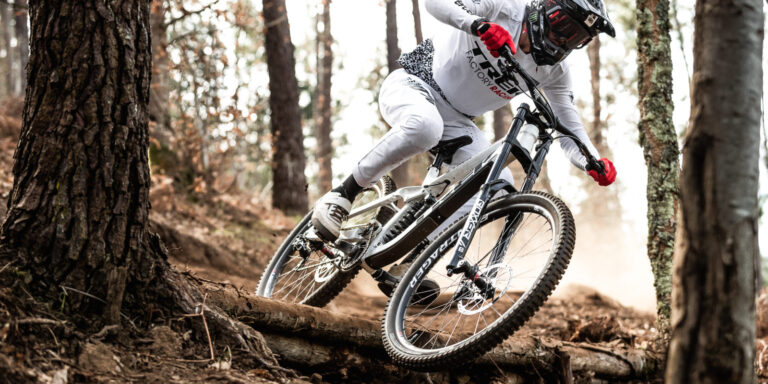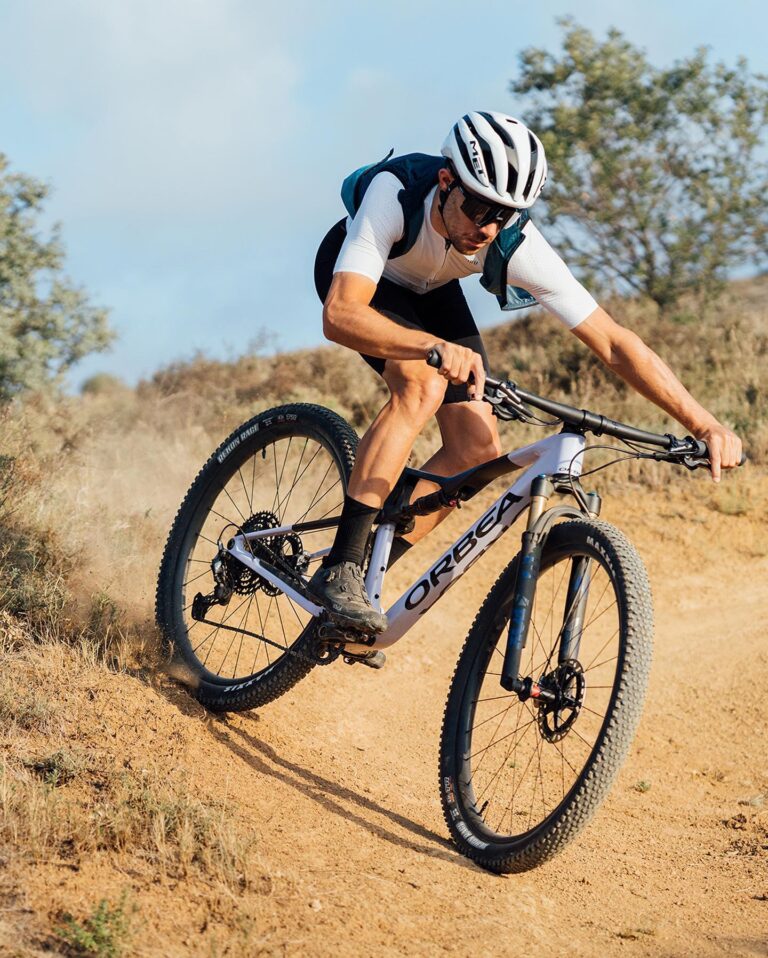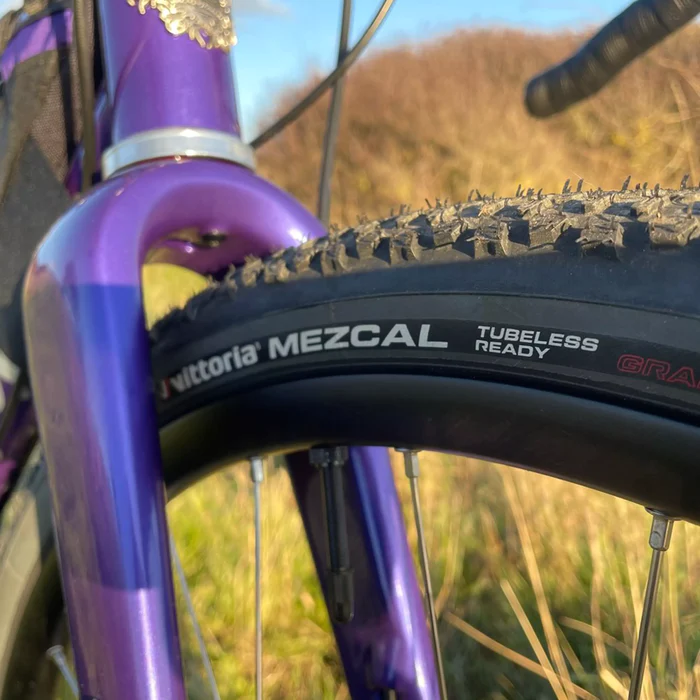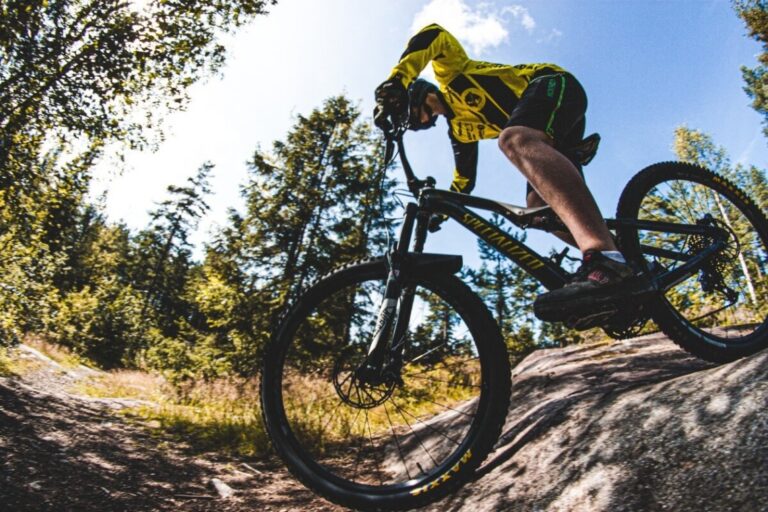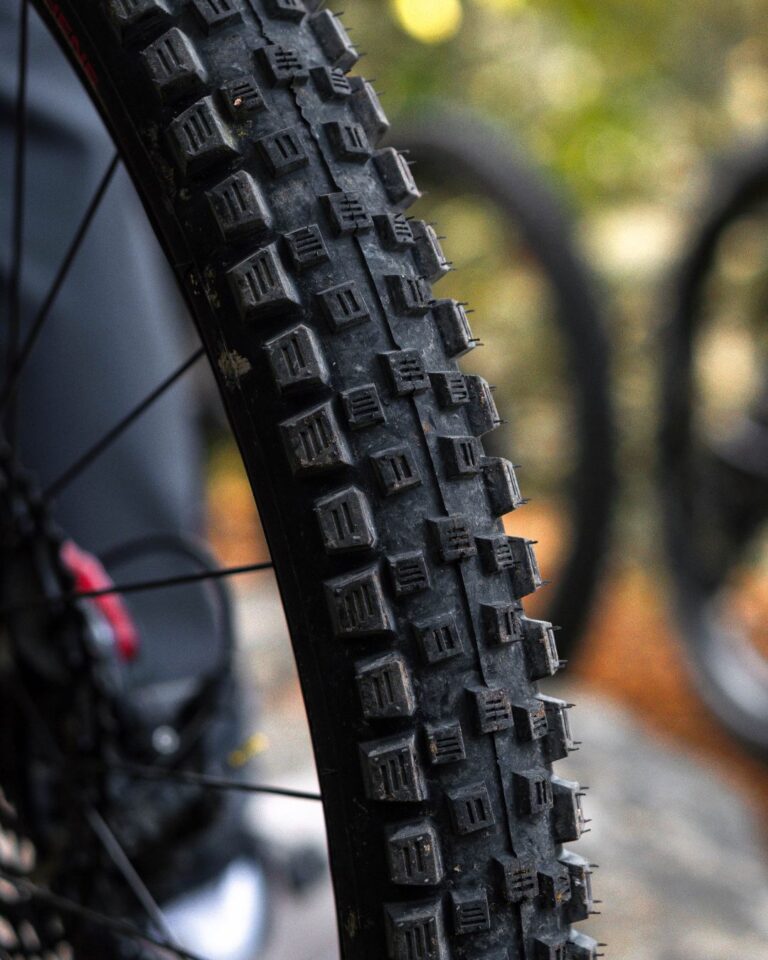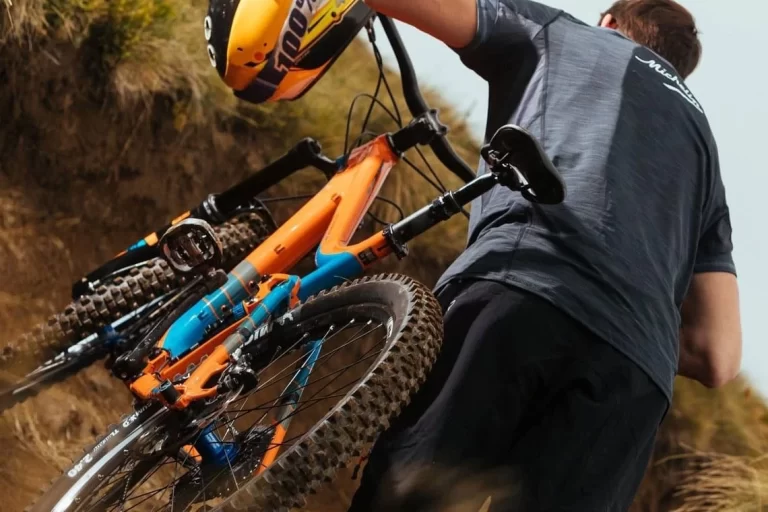Catching the Wind: Exploring Aerodynamics in Enduro Bike Tires
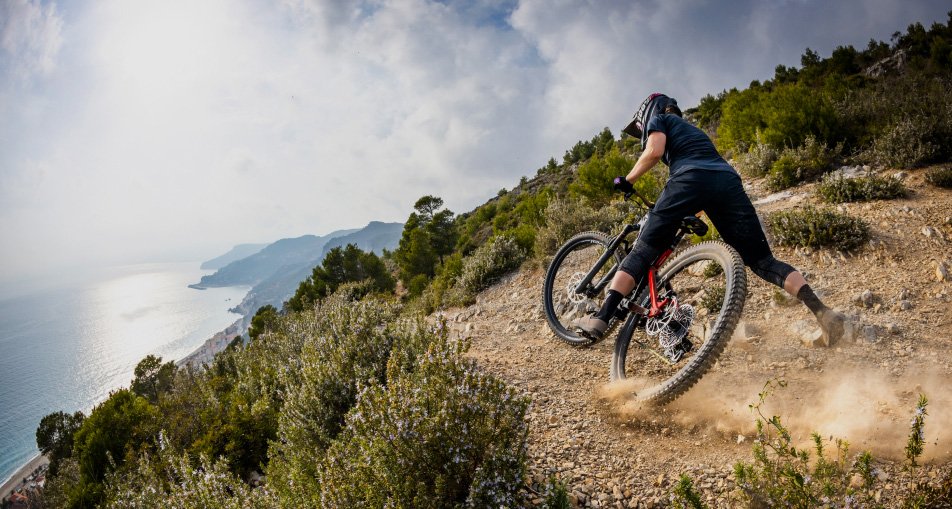
Key Point Summary of Aerodynamics in Enduro Bike Tires:
- Aerodynamics and Enduro Biking: While not as critical as in road cycling, aerodynamics still plays a role in enduro biking, affecting speed and energy efficiency.
- Enduro Bike Tires and Wind Resistance: The design and profile of enduro tires can impact how air flows around them, influencing overall wind resistance.
- Speed Considerations: In high-speed descents and open sections, the aerodynamic efficiency of bike tires can contribute to higher speeds and improved performance.
- Tire Design Features: Certain tire features, such as tread pattern and sidewall construction, can have minor aerodynamic effects, potentially influencing riding experience in specific conditions.
Throughout my years of racing and riding across various disciplines—mountain biking, gravel grinding, and cyclocross—one aspect that’s often overlooked in the enduro world is aerodynamics, particularly when it comes to tire selection. While we typically associate aerodynamic considerations with the sleek world of road racing, my experiences have shown that even in the rough and tumble of enduro biking, the way air interacts with our equipment can have noticeable effects on performance and efficiency.
Understanding Aerodynamics in Enduro
At first glance, aerodynamics in enduro biking might seem like a non-issue. After all, we’re usually more concerned with tire grip, durability, and how well they can handle rough trails. However, as I’ve delved deeper into optimizing my setups for races and demanding rides, it’s become clear that even minor aerodynamic advantages can add up, especially on faster sections of the trail or during competitive events where every second counts.
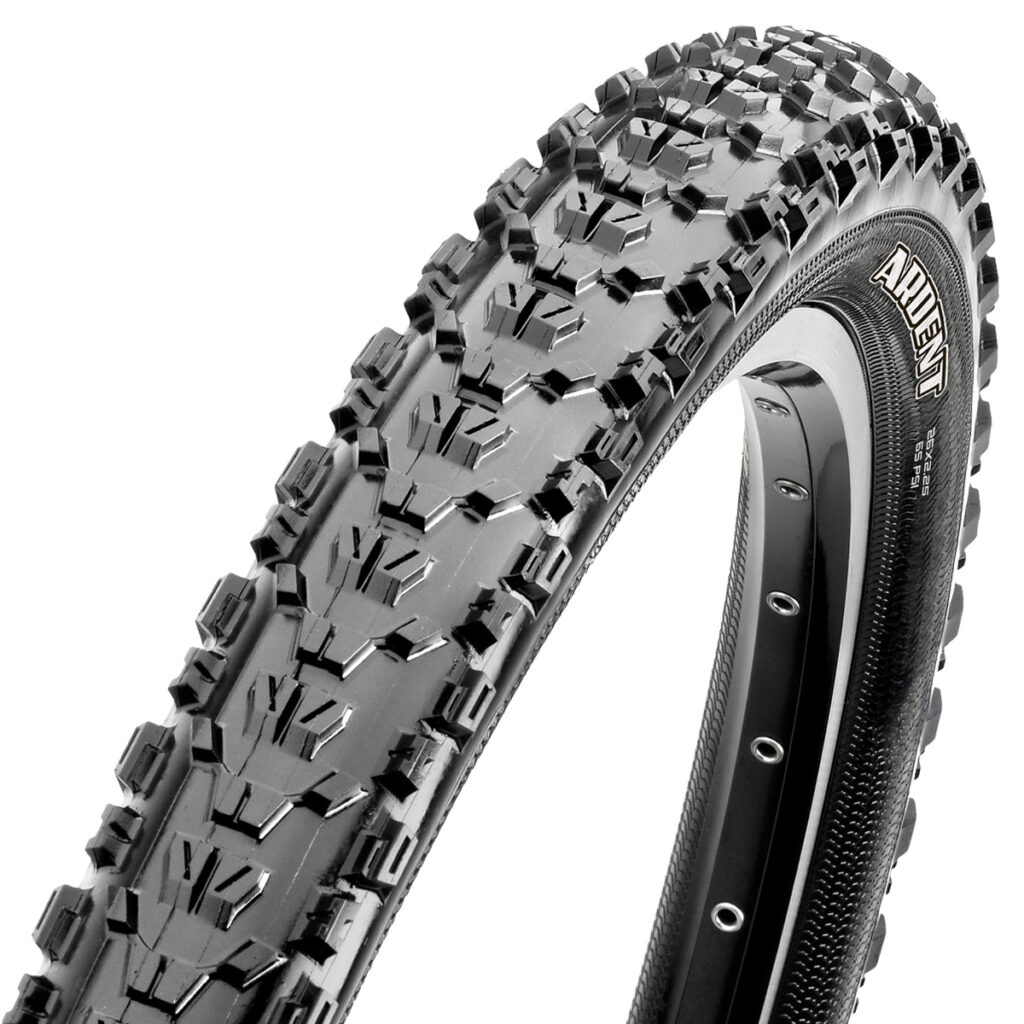
Tire Profile and Wind Resistance
One of the first lessons I learned about the aerodynamics of enduro bike tires came during a particularly fast race with long descents and open sections where speed was paramount. I noticed that tires with a sleeker profile and less aggressive tread pattern offered less wind resistance, allowing for slightly higher speeds and less effort to maintain momentum. This was a revelation—choosing tires wasn’t just about the tread and compound but also how their shape and design could affect airflow and resistance.
The Role of Speed
In enduro biking, the primary focus is often on navigating technical terrain with precision and control. However, on those stretches where you can really open up and push the limits of speed, the aerodynamic properties of your tires can come into play. I’ve found that in these situations, having tires that minimize drag can make the ride not only faster but also more energy-efficient, saving precious reserves for when you need them most.
Design Features Affecting Aerodynamics
It’s fascinating to consider how different design features of enduro tires can influence their aerodynamic properties. For instance, the tread pattern, while primarily chosen for traction and control, can also affect how air moves over the tire. Similarly, the construction of the tire’s sidewalls might play a role in reducing or increasing drag, albeit to a lesser extent than in road cycling. These subtleties have led me to look more closely at tire choices, considering not just the immediate impact on grip and durability but also the potential aerodynamic benefits.
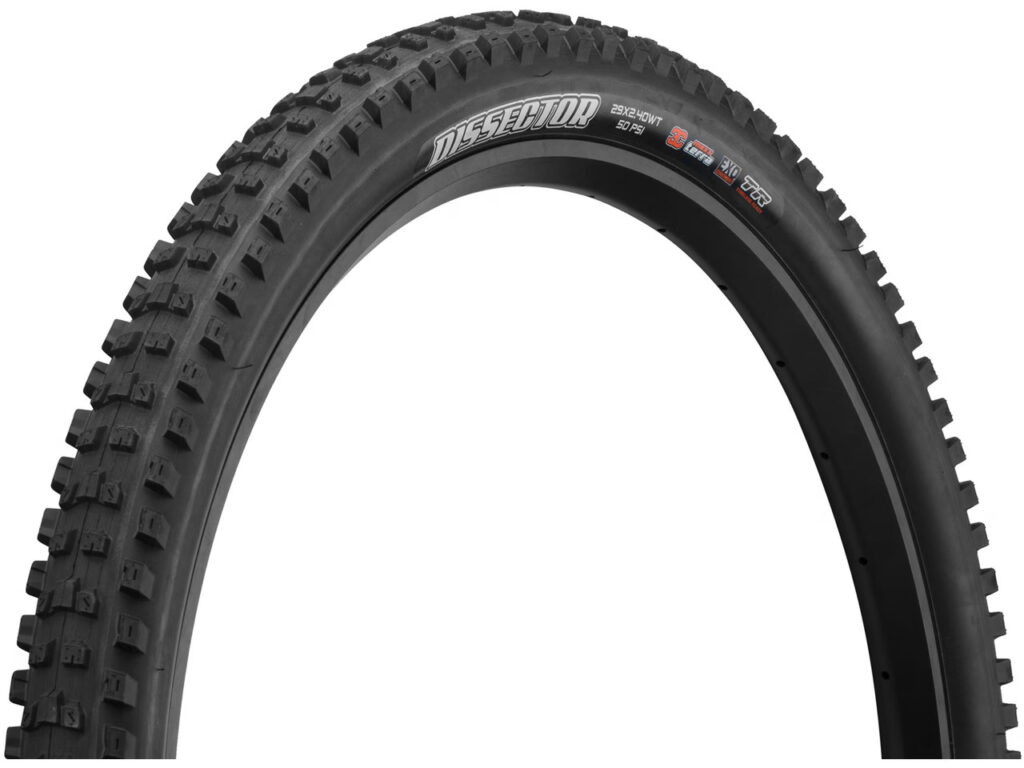
Practical Considerations
For beginner to mid-level enduro cyclists, delving into the aerodynamics of bike tires might seem daunting or perhaps unnecessary at first. However, understanding that even marginal gains in aerodynamics can lead to improved performance is a valuable insight. It encourages a more holistic approach to bike setup, where factors like tire width, profile, and tread design are considered not just for their mechanical properties but also for how they interact with the environment.
In conclusion, while aerodynamics might not be the first thing that comes to mind when preparing for an enduro ride or race, my experiences have shown that it deserves consideration. The right tire selection, taking into account both traditional factors like grip and durability, as well as aerodynamic efficiency, can enhance your riding experience. This holistic approach to understanding how every element of your bike interacts with the forces of nature can lead to a more informed, and ultimately more successful, approach to tackling the challenges of enduro biking.
For enduro riding, where a balance between grip, durability, and efficiency is crucial, a tire that leans towards a smoother tread pattern for reduced rolling resistance and potentially minimized drag, while still offering adequate traction for varied terrains, is the Maxxis Minion SS.

The Minion SS (Semi-Slick) is designed with a relatively smooth center tread for low rolling resistance on hardpack surfaces, complemented by pronounced side knobs for cornering grip in looser conditions. This design makes it an attractive option for enduro riders looking to optimize for speed and efficiency on certain types of trails, particularly those with a mix of fast-rolling sections and technical descents. While the Minion SS offers a compromise between speed and grip, the ultimate choice should align with the specific demands of your riding trails and personal preferences.
FAQ
Do tires affect aerodynamics?
Yes, tires can affect aerodynamics, particularly their width, profile, and tread pattern, influencing air flow and drag.
What is the 105 rule for Tyres?
The 105 rule suggests that for optimal aerodynamics, the width of the tire should not exceed 105% of the width of the rim’s leading edge. This aims to ensure smoother airflow from the tire to the rim, reducing drag.
At what speed does aerodynamics affect a bike?
Aerodynamics starts to play a significant role at speeds as low as 15 km/h (about 9 mph), but its effects become increasingly pronounced at higher speeds, especially above 20 km/h (about 12 mph).
Are 28mm Tyres faster than 25mm?
On smooth surfaces, 25mm tires may be slightly faster due to lower aerodynamic drag. However, 28mm tires can be faster on average or real-world road surfaces due to lower rolling resistance and improved comfort, potentially allowing for sustained higher speeds.
Happy Riding!
John
